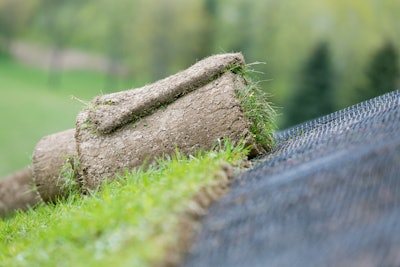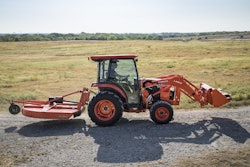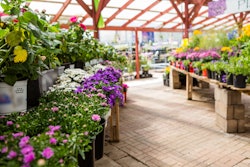
Erosion is the displacement of soil from one place to another, and it can occur on properties both big and small. While soil erosion isn’t as commonplace as other landscaping issues, it is an important problem to keep an eye out for.
If not watched, stormwater systems can become blocked when eroded soil runs into the streets, and along with being potentially harmful to the environment, eroded soil takes away beauty from your customer’s landscape.
Before it becomes a bigger issue, take a look at a few preventative steps you can take to help protect your customer’s yard from soil erosion.
What to plant
One of the most effective methods of erosion control is to keep the soil covered throughout the year, as bare soil is more vulnerable to erosion caused by wind and rain. By finding the appropriate plant coverings for the landscape, the look and health of the lawn can be better preserved.
Before deciding on a plan of action on directing runoff and water, take stock of your customer’s lawn to see whether or not there are slopes present. By simply adding in grasses, mulches and shrubs, you can help prevent erosion because rainwater and snowmelt will be better collected.
To help the soil gain more stability, consider adding in native grasses to the space, as they will produce long roots that will be able to tie the topsoil and subsoil together. Some species of vegetative cover, such as clover, will have shallow roots that won’t sufficiently stabilize the soil’s surface, especially when dealing with slopes.
Mulching will help regulate the soil temperatures, help prevent erosion in more sensitive areas, increase moisture retention, and add organic matter to the soil. Based on the area you service and the soil chemistry of your customer’s landscape, there could be a multitude of mulching options at your disposal.
The addition of buffer strips, swathes, or native species can also help reduce both erosion and sedimentation and to sweeten the pot a little more, using plants that can attract pollinators can also increase biodiversity in the landscape.
If you service an area where prairie grass is prevalent, don’t be afraid to utilize its deep, strong roots and thick, rough exterior. These grasses can also help increase soil microbial activity, which will help create an overall healthier lawn.
Terracing and retaining walls
If your customers have lawns that are plentiful with slopes, consider the possibility of adding in small retaining walls or terraces. These additions can help prevent erosion and the loss of soil resources, and as an added bonus, they also add depth and dimension to landscapes that might be a bit bland.
Terracing is a slope control method that features a staircase pattern, and buffer strips of prairie grasses can create an attractive-looking terrace. You can also use brick or stone to create a structure.
If your customer chooses to terrace, remind them that they will have the option to create patterns with several feet of turfgrass rimmed with either a vegetative buffer, brick/stone structures or a retaining wall.
Retaining walls can be used to help overcome sloped areas and will oftentimes add in visual interest as well as serving a functional purpose. These structures can be used to increase the amount of usable land in the area and they also provide environmental benefits, such as protecting areas from saturation and reducing soil erosion.
There are a few options when it comes to installing retaining walls, so be sure to inspect your customer’s lawn carefully before moving forward on a choice.
Rainfall and excess water
One thing that greatly impacts soil erosion is rainwater running off your customer’s rooftop. There are a few methods you can use to manage this. Before offering any of these suggestions to your customers, be sure to check with your local and state regulations.
One option can be to try and collect the rainwater using barrels, or in areas that won’t allow this sort of collection, consider installing a French drain or creating a rain garden.
Over the years, French drains have increased in popularity because they are functional, can be concealed easily, and have numerous other benefits. French drains can be covered with turf or mulch after being installed to maintain the beauty of the landscape.
If customers aren’t sold on the idea of installing a French drain, creating a rain garden in the space can also prove a viable option. It’s true that this method might not be as effective as a French drain, but it can still act as a good source of drainage while still adding in a garden aspect to the space.
If the soil in your customer’s yard is workable, creating a rain garden shouldn’t be a problem. By directing excess water and runoff into swales or rain gardens, it can help the environment by keeping harmful substances from running into stormwater systems.
According to the Penn State College of Agriculture Sciences, there are three zones for rain gardens: wet zone, mesic (middle) zone, and transition zone. Different plants will thrive in each zone, so carefully research before adding any plants to the garden.












